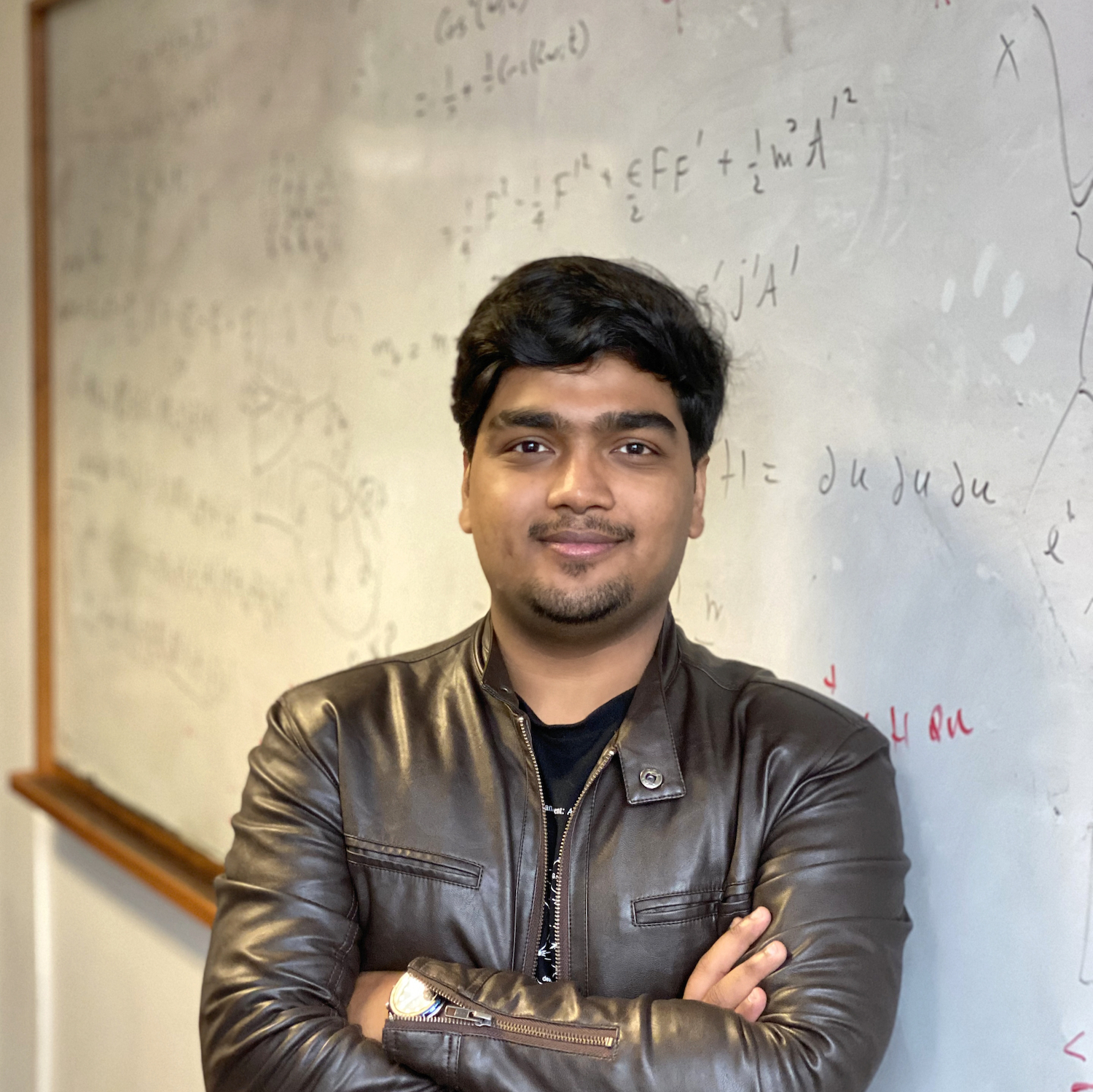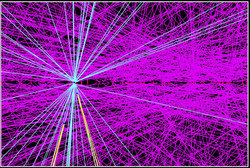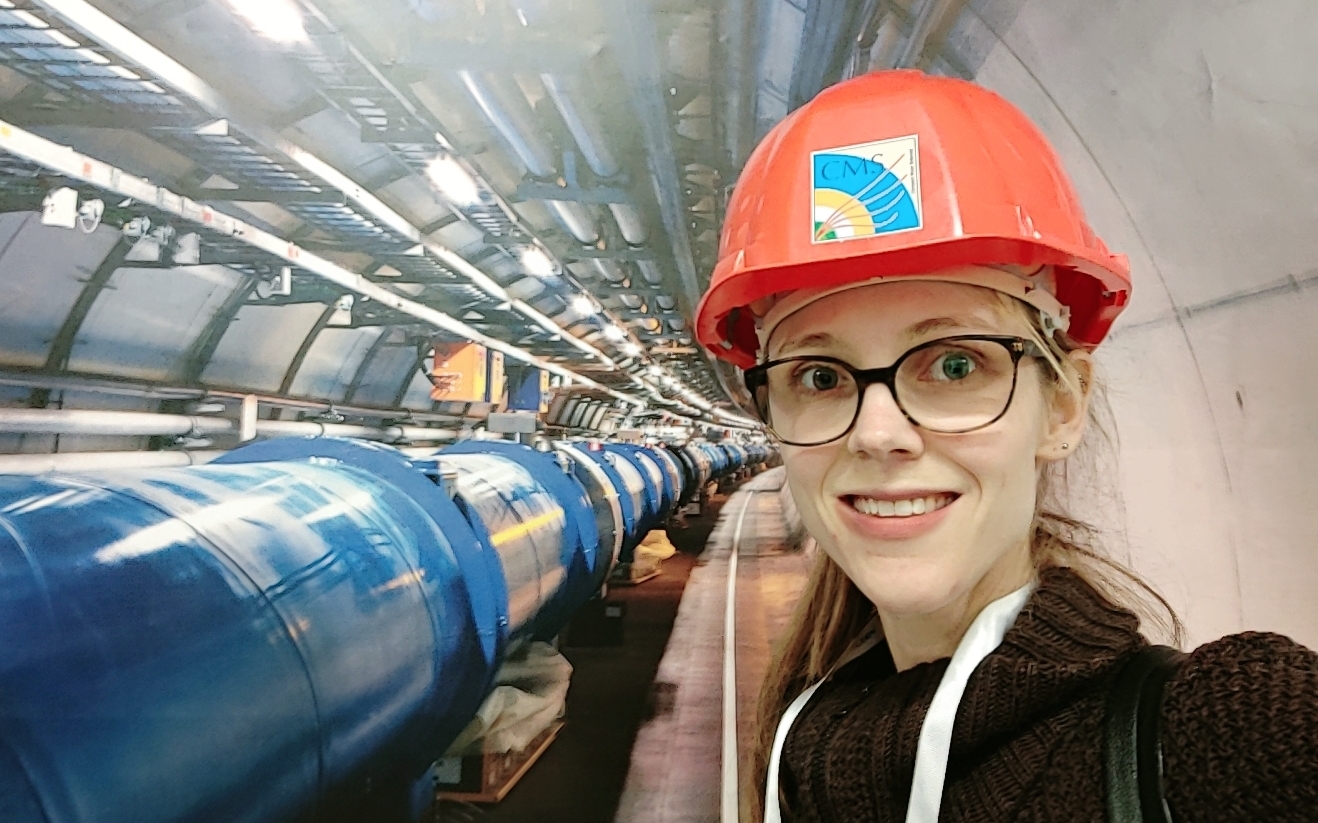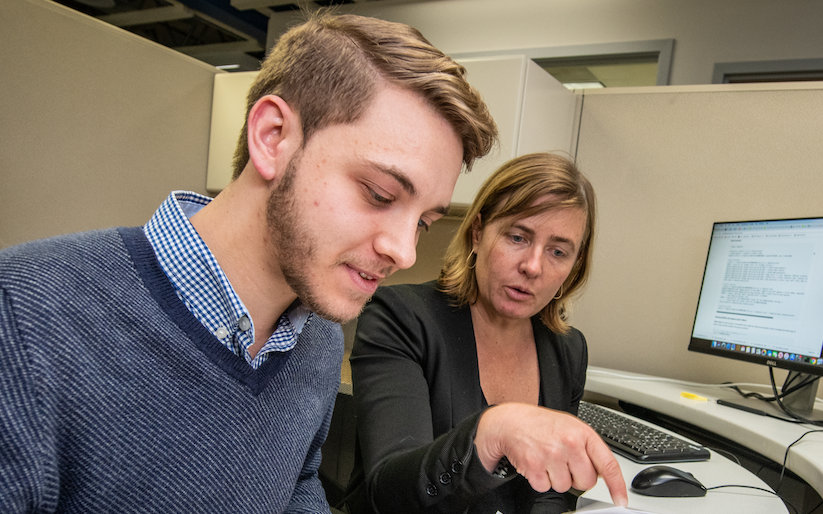There wasn’t as much buzz about the particle physics applications of quantum computing when Amitabh Yadav began working on his master’s thesis in the field at Delft University of Technology in the Netherlands a couple of years ago, he recalled.
“Quantum was not at all as hyped as it is now,” he said. “I had this interest that I had to find some way of using quantum for high-energy physics,” he said.
He had spent a summer working in a particle detector group at CERN laboratory in Switzerland, and wanted to find a way to marry his interests in quantum computing and particle physics. The particle physics community’s interest in quantum computing began to take root, too: In November 2018, CERN hosted a first-ever conference on quantum computing for high-energy physics.
“Just in the last year, a lot of people are getting into this and saying, ‘It will work,’” he said.
Yadav, an electronics and computer engineer with experience in quantum computing who joined Berkeley Lab in November as a research associate, is now working on a project to apply quantum computing to solve a pending big data problem for the particle physics community.
Particle Physics Turns to Quantum Computing for Solutions to Tomorrow’s Big-Data Problems
Click on a name or photo below to learn about research projects in quantum computing by early-career researchers at Berkeley Lab:
The planned 2026 upgrade of CERN laboratory’s Large Hadron Collider, the largest particle collider in the world, will produce a higher volume of particle collisions that will necessitate new ways to quickly and efficiently sort through the data using advanced computer algorithms. Researchers are now exploring quantum computing as a possible way to manage this extremely high volume of data.
“I had a pretty good idea of how to approach the problem,” Yadav said, based on his master’s research and his time working as a research assistant at QuTech, a quantum technology organization in the Netherlands.
Since he joined Berkeley Lab, Yadav has explored the adaptation of a common technique used in particle physics, known as Hough transform, for the quantum realm.
Hough transform is a pattern-recognition technique that is useful for analyzing particle physics data. It can pick out simpler patterns – such as lines, curves, and circles – from more complex images. This can be useful in identifying the patterns that particles trace through detectors, for example.
“You have an image with many scattered points,” Yadav said. “And you try to connect those points using simple line segments or you connect them in curves to trace the track that the particles would have traversed.”
By adapting this technique for quantum computers, there is the potential to quickly analyze a far larger and more complex set of data to map out these patterns.
There is a growing level of expertise in quantum computing at Berkeley Lab, Yadav noted, adding that the network of other researchers here has been invaluable for his work.
“Everybody is very approachable,” he said. “We discuss lots of ideas. There are very strong quantum algorithm teams here.”
Yadav started up with a small dataset that uses just 16 quantum bits, or qubits, to help reconstruct particle tracks with a quantum Hough transform algorithm. He has so far enlisted IBM QISKit, a quantum-computer simulator supplied by IBM. When the algorithm is ready for a real device, he plans to test it on real quantum hardware: an IBM Quantum Processor. He hopes the algorithm can eventually be adapted to run on 500 qubits.
Yadav will be working on this project through April. “It’s too early to comment on how good its performance will be” compared to conventional computers, he said. “I see the potential for a speed-up.”
It’s good to be working on these quantum algorithms even at such an early stage, Yadav said, as the field is maturing quickly.
“From what it looks like in experiments done around the world – in the next five or 10 years we can have a very promising technology,” he said. “The idea is to be prepared for it. Coming up with the algorithms is a very big challenge.”
Click on a name below to learn about other research projects in quantum computing by early-career researchers at Berkeley Lab:
# # #
Founded in 1931 on the belief that the biggest scientific challenges are best addressed by teams, Lawrence Berkeley National Laboratory and its scientists have been recognized with 13 Nobel Prizes. Today, Berkeley Lab researchers develop sustainable energy and environmental solutions, create useful new materials, advance the frontiers of computing, and probe the mysteries of life, matter, and the universe. Scientists from around the world rely on the Lab’s facilities for their own discovery science. Berkeley Lab is a multiprogram national laboratory, managed by the University of California for the U.S. Department of Energy’s Office of Science.
DOE’s Office of Science is the single largest supporter of basic research in the physical sciences in the United States, and is working to address some of the most pressing challenges of our time. For more information, please visit energy.gov/science.




